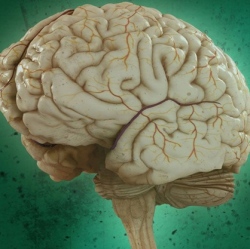
Sergiu Pasca of Stanford and colleagues have developed “human cortical spheroids”, miniature cultured 3-D structures that grow and function much like the cortex of the brain of the person from whom they were derived.These “organoids” (3-D complexes of cells that function like an organ) buzz with neuronal network activity.
“There’s been amazing progress in this field over the past few years,” said Thomas Insel, M.D., Director of the NIH’s National Institute of Mental Health, which provided most of the funding for the study.
“The cortex spheroids grow to a state in which they express functional connectivity, allowing for modeling and understanding of mental illnesses. They do not even begin to approach the complexity of a whole human brain. But that is not exactly what we need to study disorders of brain circuitry.”
“While the technology is still maturing, there is great potential for using these assays to more accurately develop and test safety and effectiveness of new treatments before they are used in individuals with a mental illness,” said David Panchision, Ph.D., NIMH program director for stem cell research.
What’s next? Perhaps development of multiple neuron subtypes that normally populate the cortex, as well as long-distance connections between this cortex-like structure and other, yet to be developed, organoid structures, the researchers say.
